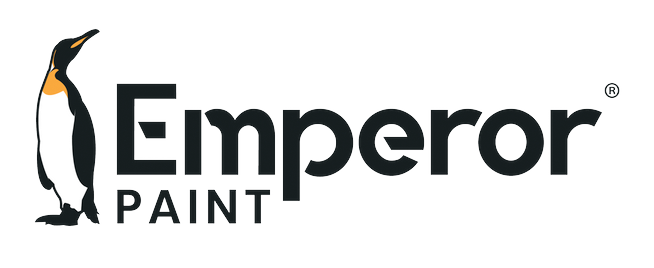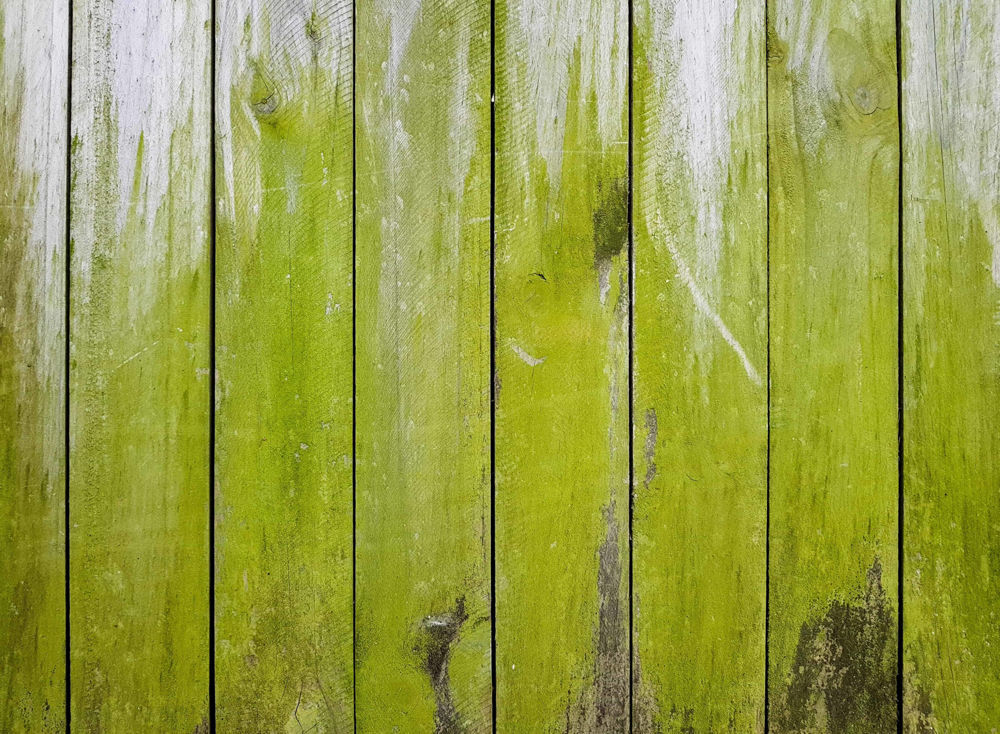
Are you wondering why your fencing is turning green? Finding a permanent solution to the problem can be difficult, which is why we have put together this expert guide to removing algae from fences permanently, so you can ensure your fencing stays looking at its best all year round.
What Causes Algae To Grow On Fences?
Algae is a form of organic fungal growth that forms a green film on a range of timber surfaces. Like any organic growth, algae generally requires high levels of moisture, which is why it thrives in a dark, damp environments. It can also be aided by sunlight, although fencing that is gets large amounts of shade can also suffer from algae due to the moisture these dark conditions create.
You may be wondering why wood in particular is prone to algae growth. The answer is, wood is a natural mineral surface. This means that it is highly porous, allowing it to absorb and hold large amounts of moisture. Exterior mineral surfaces rarely come with high levels of water-resistance to start with, which is why if they are left bare, there is little to prevent moisture from saturating the material.
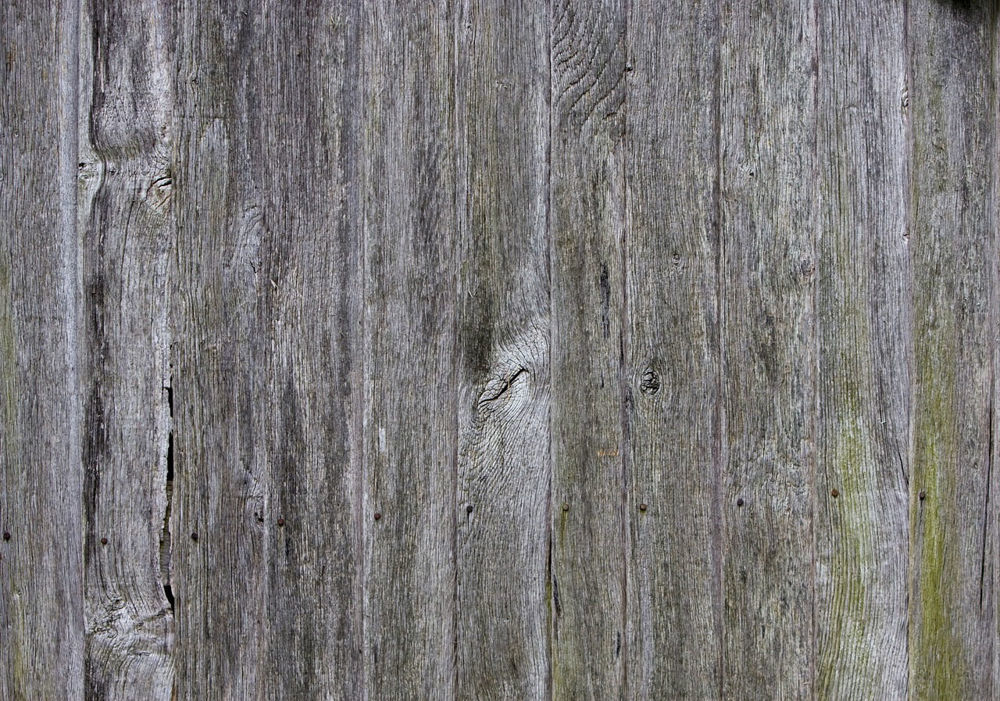
How Do You Prevent Algae Growing?
If the exterior wood is left bare and untreated, this organic growth such as algae and other moisture related problems will only worsen over-time until the source of the moisture is addressed. While the algae can be removed from the surface, it will simply begin to reappear once the conditions are present again for it to grow.
The only way to reduce algae from growing is to prevent the moisture that it requires in order to thrive. To achieve this, you must apply a waterproofing product that will prevent the timber from absorbing moisture. Contrary to popular belief, wood paints and stains are not waterproof. While they offer some level of weather-resistance, they do not prevent water from entering the wood completely. To be waterproof, a product must be water repellent, which causes any water that lands on the surface to fall off before it can absorb into the substrate.
When looking for a waterproofing product, the second thing you must consider is the breathability of the product. Breathability refers to how easily water vapour can pass through a surface. If a product with low breathability is used on the wood, it will cause moisture to become trapped inside the surface, which will only serve to worsen any moisture related problems rather than solve them.
Emperor Exterior Wood Waterproofer was specifically designed to keep exterior timber surfaces dry and thus free from algae, lichens, mildew, rotting and all other problems associated with damp outdoor timber. It creates a super hydrophobic surface on any outdoor wood, including fencing, which repels water and prevents 96% of water absorption. It achieves this while also remaining highly breathable, ensuring the timber has a consistent, low-level of moisture.
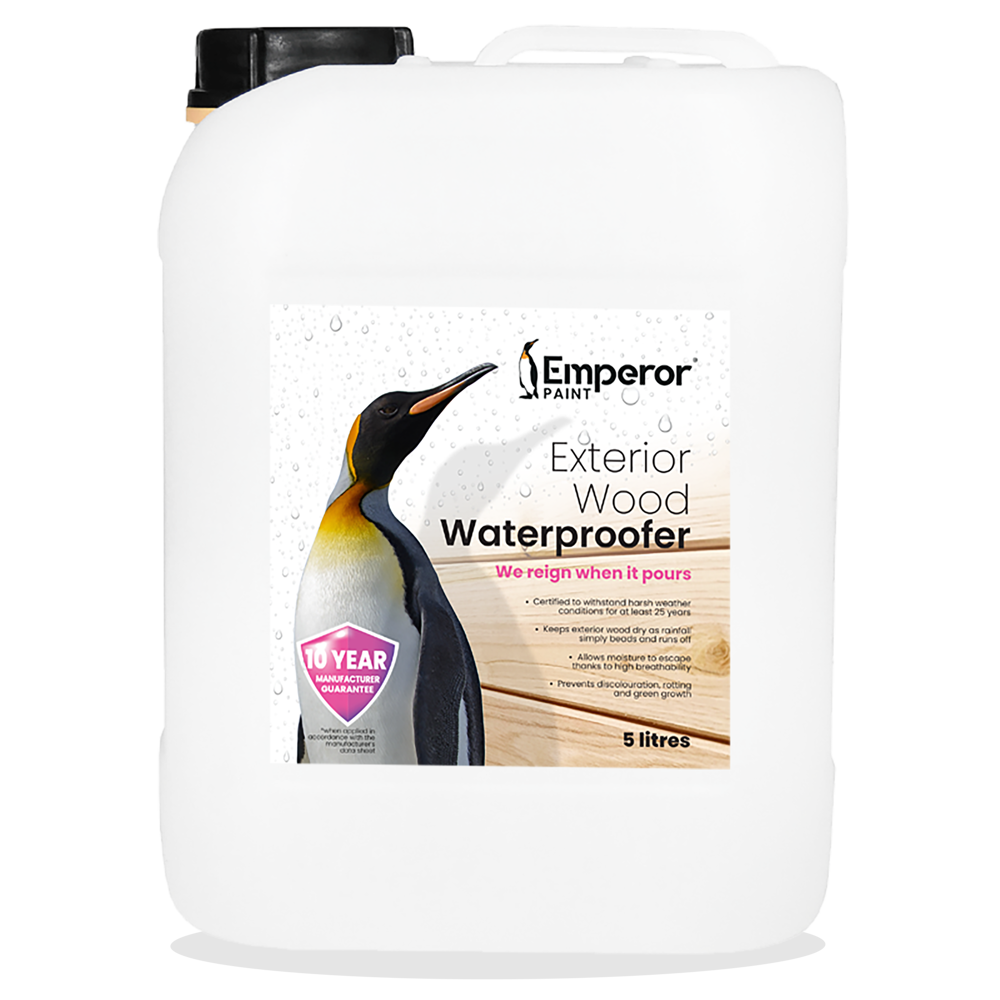
The treatment chemically bonds to timber instead of forming a coating on the surface, meaning once dry it offers completely invisible protection to the timber that maintains the natural beauty of the grain. This also means that there is no film or coating on the surface to become weathered, meaning once applied it will not need regular reapplication. In independent 25 year weathering tests, it was found to have no change in performance or appearance in any way, meaning it will likely far exceed a 25 year life expectancy. It also comes with a 10 year manufacturer guarantee, which further certifies its long-term performance when subjected to any weather conditions.
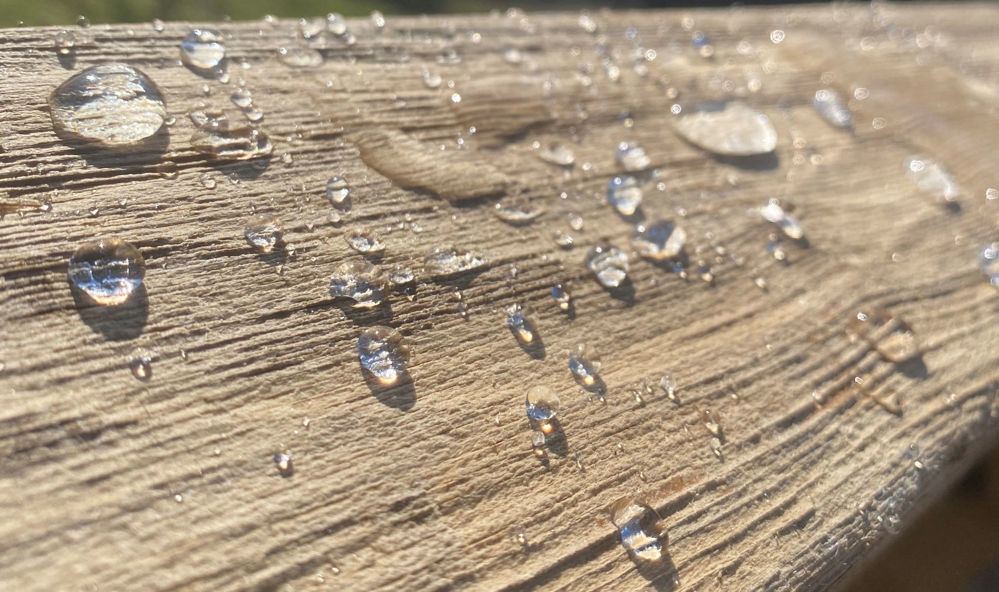
How To Remove & Prevent Algae On Fencing
CLEANING
Before you do anything else, the first step of removing algae from fencing is to clean the surface. Cleaning is a two step process, which firstly starts with removing any surface level dirt. On fencing that has large amounts of surface dirt, the best way to clean this is using a pressure-washer. This can saturate the wood with moisture, so once this is done it is important to allow the wood extra time to dry. If the dirt is not widespread, a brush and hot soapy water will be sufficient to remove any dirt from the wood.
The second stage of the cleaning process is to apply a fungicidal cleaner to the fencing. This will kill any fungal growth, including algae, moss and lichens, ensuring that this organic matter can no longer grow once the wood is treated. Simply apply Emperor Exterior Cleaner to the fencing using a brush, roller or pump-sprayer at 5m2 per litre and allow it to dry for 2 hours. After this period, the fungal growth on the wood will be killed and you can simply hose down the fencing to remove any cleaning solution residue.
TREATING
Once the fence is clean and free from algae, you can then apply the protective treatment. Emperor Exterior Wood Waterproofer is a one-coat treatment that can be applied by brush, roller or pump-sprayer, so it is completely up to you how you apply it. It is a thin liquid that simply needs to be applied at 5m2 per litre and allowed to dry for 1 hour at 20°C or longer if the temperatures are lower. That is the only requirements of applying the product, so it really couldn't be easier!
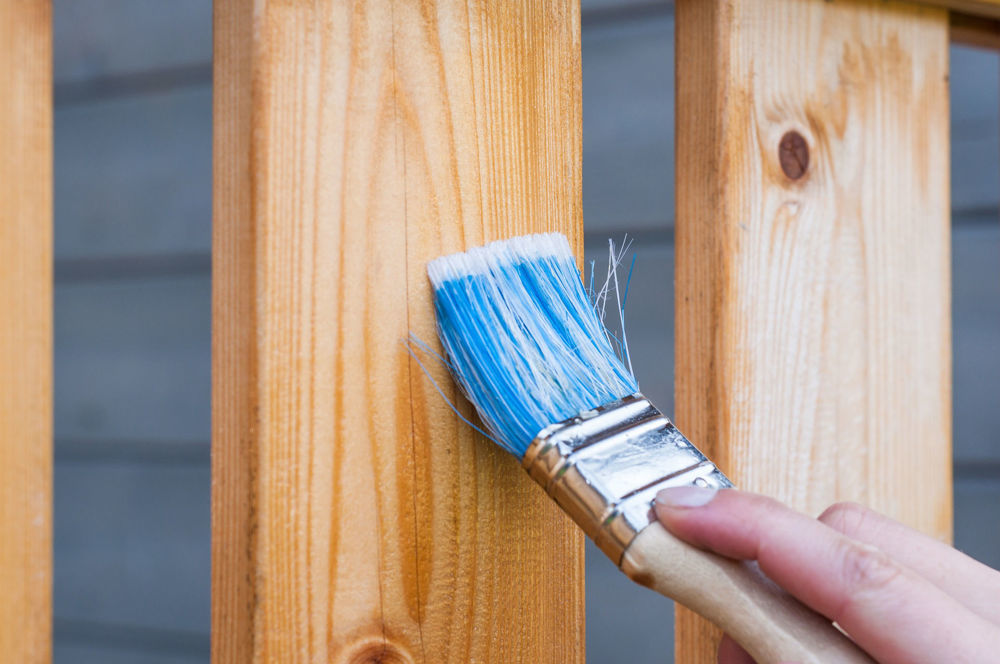
Frequently Asked Questions
Q. OTHER THAN ALGAE, WJAT OTHER SIGNS ARE THERE THAT MY FENCING IS BECOMING SATURATED WITH MOISTURE?
If you have any bare, untreated outdoor timber, the likelihood is that it will be absorbing moisture from wind-driven rain. Aside from organic growth, other tell-tale signs that high levels of moisture are present in the fencing are rotting, splitting of the wood, but most importantly the discolouration of the wood. This discolouration comes in the form of the wood darkening, which can leave the wood patchy and looking tired.
The below image shows fencing where one panel has been treated using Emperor Exterior Wood Waterproofer and the rest of the panels have been left untreated, which demonstrates the significant change in appearance damp wood can have when compared to dry wood.
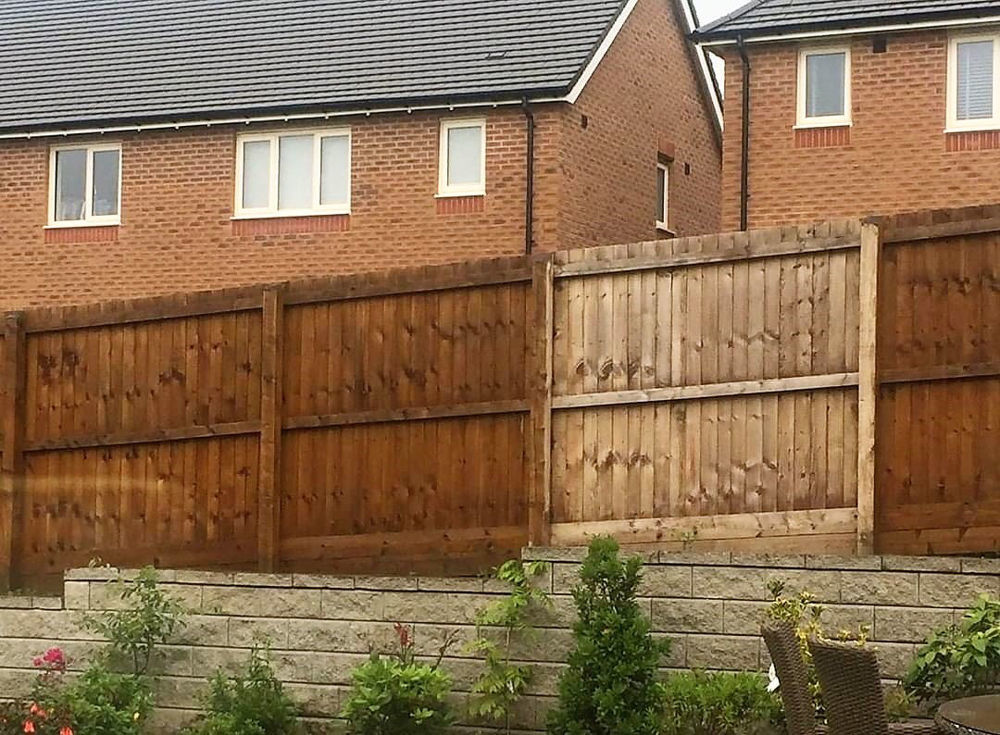
Q. HOW OFTEN DO I NEED TO RE-APPLY THE TREATMENT TO MY FENCE?
Emperor Exterior Wood Waterproofer has been proven in independent testing to withstand any weather conditions for 25 years, however it will likely far exceed this as after the 25 year testing was completed, there were no signs of deterioration in performance. We also offer a 10 year manufacturer guarantee on the product.
Q. WHAT IS THE DIFFERENCE BETWEEN ALGAE AND OTHER ORGANIC GROWTH?
While all organic growth thrive in high moisture conditions, they do vary in a numbers of ways. Algae is a slimy substance that creates a green layer on the surface of the timber. Mildew is a mould like fungal growth, often in the form of black spores. Lichens can vary from species to species, but most often are a silver or green crust, while moss is a commonly found organic growth that forms dense, fluffy blooms across the timber.
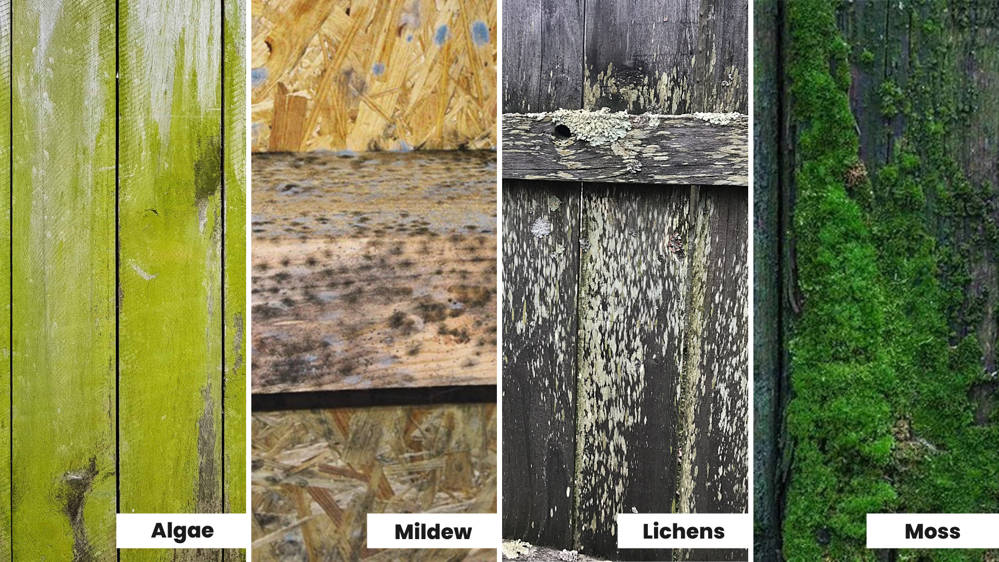
Q. HOW OFTEN WILL I NEED TO CLEAN ALGAE FROM MY FENCE IF I DON'T TREAT IT?
If you decided that you simply wanted to clean the algae from the wood rather than prevent the source of the moisture, the algae would be likely to grow back within 6 months. This regular maintenance cycle is what leads to many homeowners taking permanent measures to prevent the re-growth of algae on fencing, which can save time and money in the long run.
We hope we have answered any questions you may have had regarding not only how to remove algae from fences, but how to reduce the risk of it reappearing. If you have any other questions, feel free to get in touch with our team of experts who are on hand to assist you. Contact them today by emailing info@emperorpaint.co.uk or calling them on 0161 509 9009. Alternatively, shop Emperor Exterior Wood Waterproofer and get FREE delivery on all orders.

